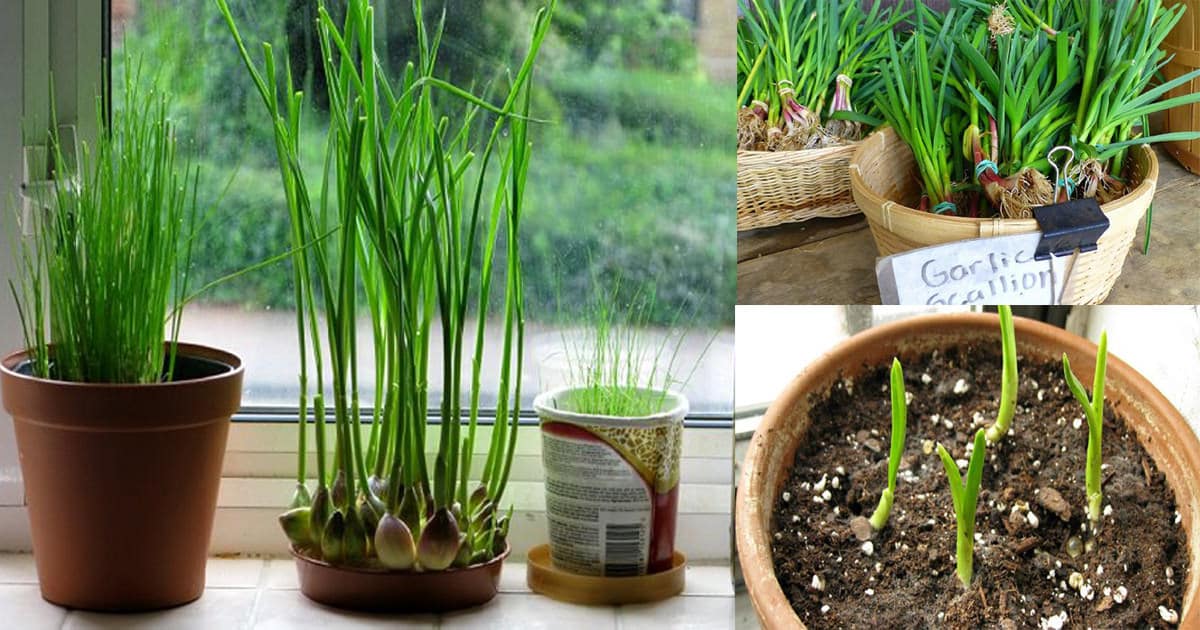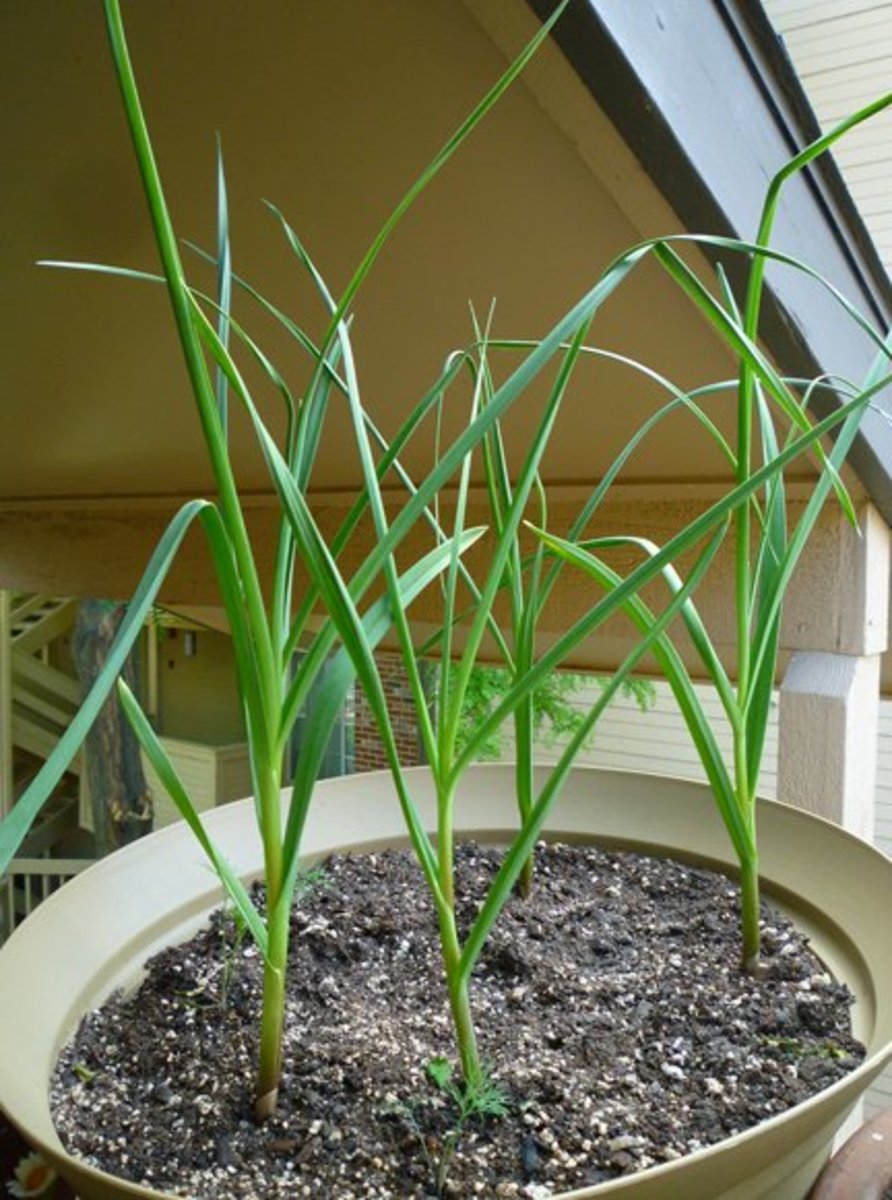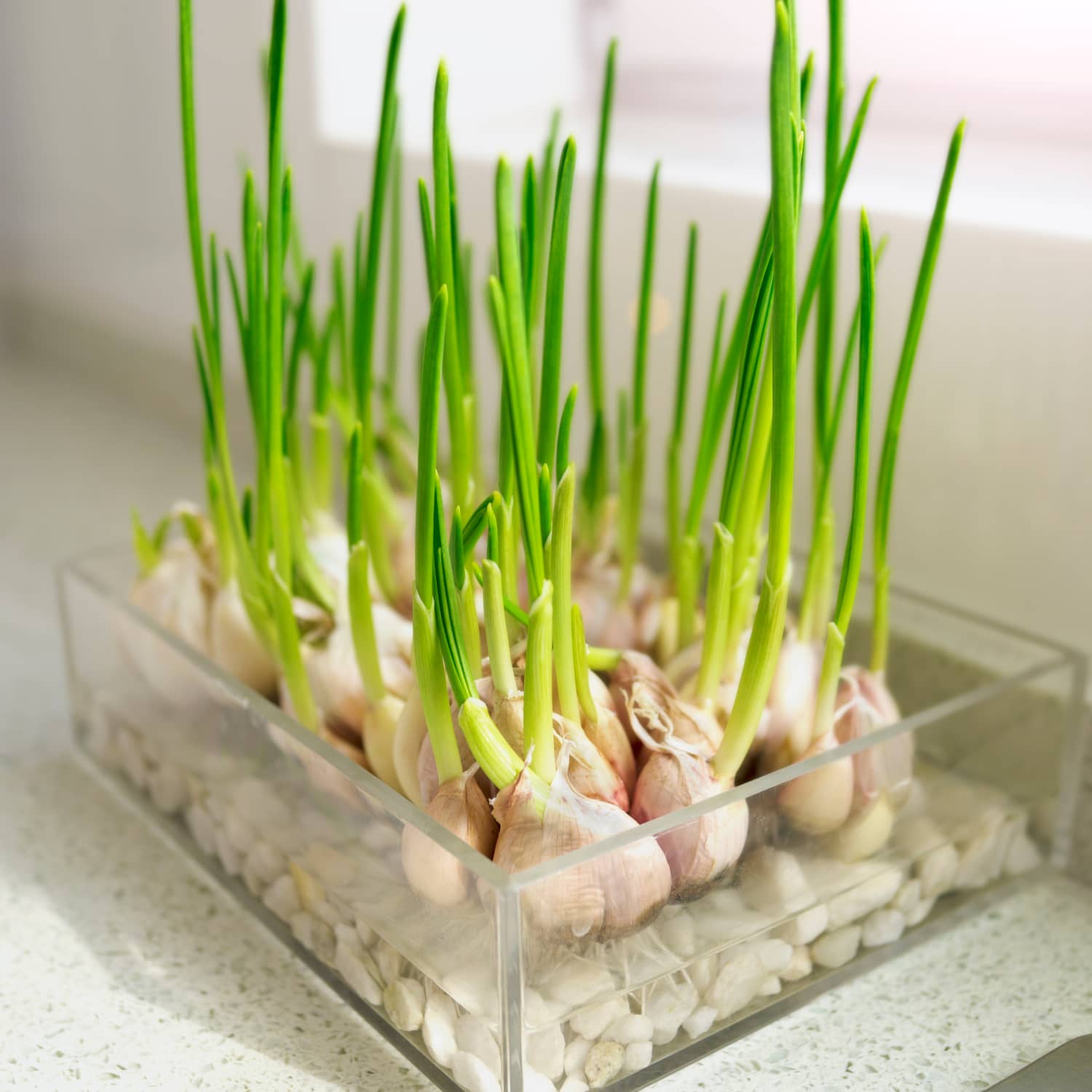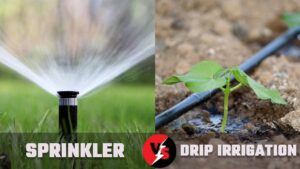
Almost no other edible vegetable compares to the crispness and spiciness of fresh garlic. This plant does not require the use of a garden to grow. When planted in large, deep pots and placed in a bright, sunny spot, the bulbs thrive. Continue reading to learn how to produce garlic in pots.
Why Grow Garlic in Pots?
You could be asking why growing garlic in pots is a good idea.
Perhaps, like many gardeners, you prefer to cultivate your plants in pots. If you have a tiny home or garden, you may easily relocate the pots, grow garlic at any time of year, and conserve space.
It is easier to control the environment in which your garlic plant grows when you grow it in pots: you can simply keep the soil loose and moist while being careful not to get it too wet. You may even move your container in and out of direct sunlight or rain. When planted in the garden, the extended growing season this plant requires before it is ready for harvest means it has plenty of time to be attacked by numerous pests and diseases.
Plus, you won’t have to deal with weeds or figure out how to protect the ground from freezing and relocate your bulbs throughout the winter.
You’ll have a better chance of enjoying your own fresh, homegrown Allium sativum in your kitchen if you keep a close eye on your tiny crop.

Choosing The Right Pot
You’ll need a container that’s at least 8 to 10 inches deep to get started. This will provide adequate space for the garlic plant’s roots to grow comfortably.
Keep in mind that garlic cloves should be planted four to six inches apart when choosing your container.
Four to six plants can be grown in a pot that is 24 inches long and eight to 10 inches deep, which will keep you well fed for a long time. Alternatively, select many smaller but deep containers and plant one or two cloves in each.
Preparing The Pot
You can use any of the following soils to fill your garlic pot:
- According to package guidelines, amend loose potting soil with a little amount of 10-10-10 NPK fertiliser.
- Garden soil, filtered to eliminate lumps and pebbles using a wire mesh or sieve, then amended 50-50 with manure or well-rotted compost.
The garlic plant prefers a pH of 6.0 to 7.5 and a loose, well-draining, rich clay soil.
Check the pH of your garden soil with a soil test to see if it’s suitable for your teeth.
Also, avoid using soil that has recently been planted with other Alliums. Pests and fungus attracted to Alliums will be less likely to thrive near the freshly planted teeth as a result of this. Even after the preceding Allium plants have died, some of the fungi can survive in the soil.
How Do Garlic Grow?
Planting cloves from an existing bulb is the most popular approach to propagate garlic.
The bulbils, which are small micro-cloves that grow from the scales and flowers, can also be used to start the garlic. You can grow them just like normal teeth, but they can take up to two years to mature, so be patient.
Seed cloves (regular size, not bulbils) can be purchased from a garden center or nursery. Some will even come pre-cooled or “pre-winterized,” allowing you to plant them straight away without having to worry about chilling them beforehand.
You can also do what we did and buy organic bulbs at the shop and propagate them yourself.
Sowing Garlic Cloves in Pots
When separating your teeth from the bulb or head, the first thing to remember is to leave the papery skin on your teeth. The skin protects the teeth and aids in the prevention of infections.
In any event, I find garlic peeling to be a tedious chore, so it’s great that you don’t have to do it before planting!
Take your teeth and dig little holes about the same depth as they are long, roughly 1-2 inches deep each, four inches apart, once the container is filled with the soil of your choice.
Insert one tooth, pointed side up, into each hole. Green shoots may already be emerging from the teeth, as I did when I planted mine.
You don’t want to plant the wrong side up since the roots will develop from the bottom of the tooth.
Cover with a light layer of dirt and water thoroughly.
Soft-necked kinds planted in the spring can be grown inside or outdoors in a sunny position as long as the air temperature is regularly above 8 ° C.
This is due to the fact that spring-planted soft-necked varieties have a much shorter growing season, usually approximately 90 days from planting to harvest, depending on the variety. You will get smaller teeth, but you will get them sooner.
Place your container outside as soon as you’ve planted it in a sunny position if you’re planting soft-necked or stiff-necked kinds in the fall.
Also, garlic requires at least six to eight hours of sunlight per day.
Caring for Garlic in Pots
Once garlic is planted, it is simple to maintain. Make sure the containers are in a sunny location, move them if necessary, and give them 1/2 to 1 inch of water per week.
Dig into the soil closest to your garlic plant, about two inches from the plant and four inches deep, to check the moisture level. You don’t need to water yet if the earth is wet down there. If it’s dry, however, go ahead and water it thoroughly.
If it rains a lot, don’t water your plants for at least a week because garlic hates wet soils and will rot.

Do you Live in an Area Where there is Constant Rain?
One of the advantages of container gardening is that if it rains for a day or two, you can simply transfer your pots to a sheltered spot or even indoors.
If necessary, replace direct sunlight with a grow lamp (artificial light) while they’re indoors, and then turn them back on after the rain stops.
After the first frost, you can stop watering stiff-necked types. While the water in your container may not completely freeze, it will be cool enough to start the vernalization process, in which the plant does not require water.
If you want to keep moisture sealed in, go ahead and cover your plants with an inch of mulch.
Watering can be resumed in the spring after the last frost has passed for two weeks.
This is also an excellent time to apply a 5-10-10 NPK granular fertilizer to the soil, following the package guidelines.
As summer comes, you may want to apply a little additional mulch, preferably one with a lighter tint (like straw) to reflect heat away from your plant.
The success of developing bulbs is dependent on keeping the soil cold.
Once the soil begins to warm up in the spring, the plant will begin to generate underground bulbs, but if the soil becomes too hot, the bulbs will stop growing prematurely, leaving you with little or undeveloped bulbs.
As spring blooms in your area, you’ll need to trim the long, curly curls (flower stalks) from your stiff-necked plants.
This keeps the plant’s energy focused on bulb growth rather than flowering and planting.
Grill or sauté the escapes if you trim them while they’re still tender. They’re fantastic!






